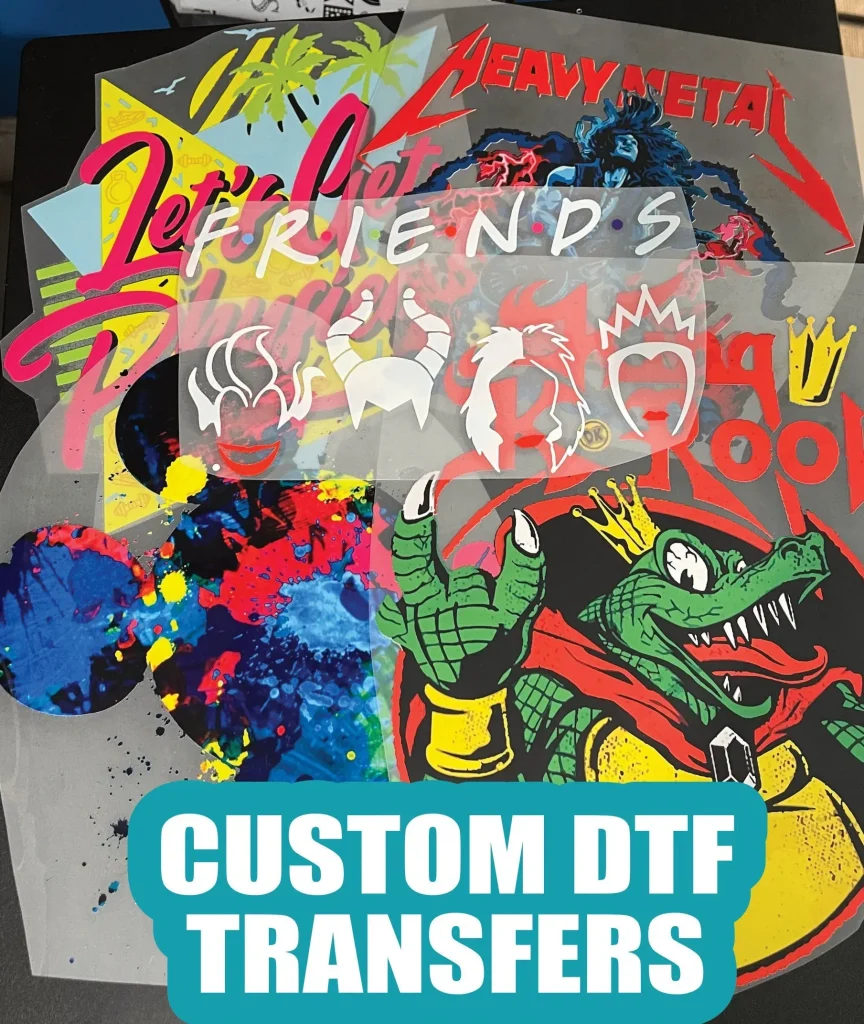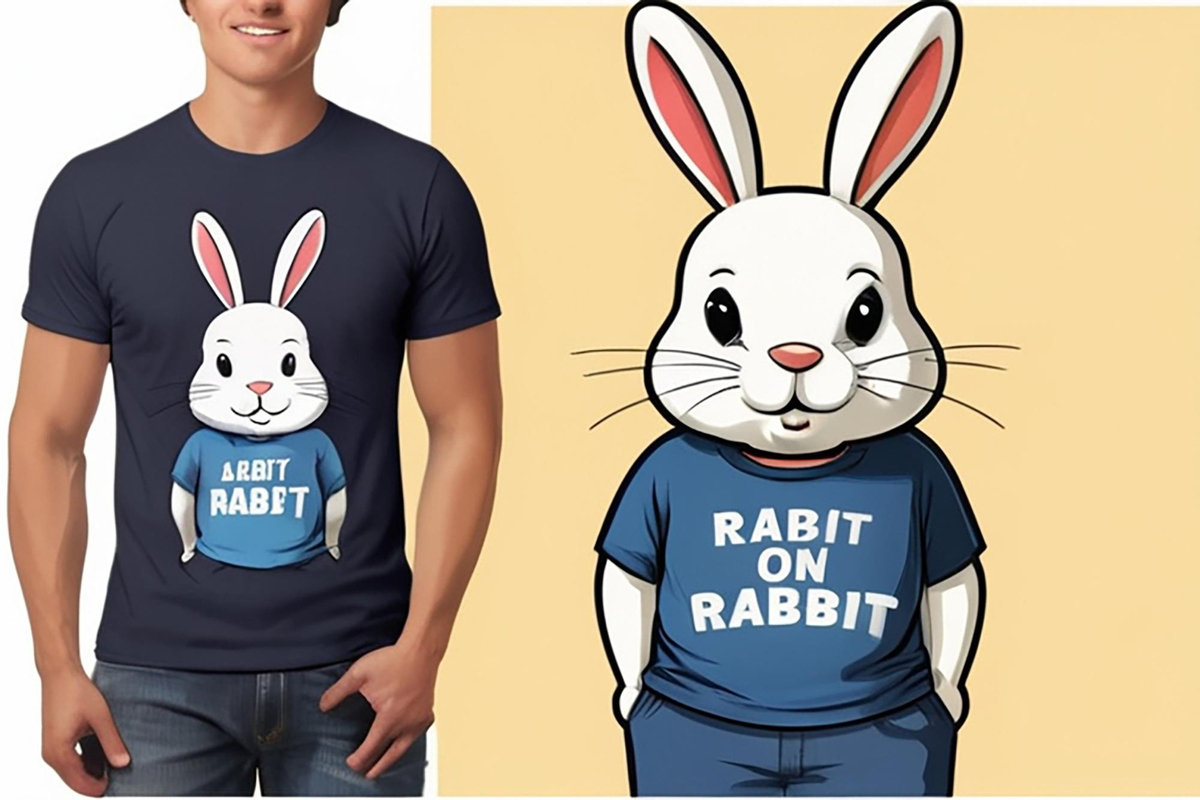DTF transfers, or Direct-to-Film transfers, are revolutionizing the custom apparel printing landscape with their vibrant colors and impressive durability. As a beginner looking to dive into this innovative printing technique, understanding the essentials is crucial for unlocking its full potential. This guide will walk you through the intricacies of DTF printing, providing helpful tips and insights to help you achieve stunning results. Whether you’re planning to start a personal project or a small business, knowing the ins and outs of DTF can set you apart in the custom merchandise market. Get ready to embark on an exciting journey into the world of DTF transfers and elevate your printing game!
Often referred to as direct-to-film printing, DTF transfers enable creative individuals to bring their design ideas to life with ease and precision. This printing option is gaining traction among custom apparel enthusiasts who appreciate the ability to produce vivid and intricate designs that withstand the test of time. For those new to this technique, mastering the art of DTF involves learning specific printing tips and best practices to ensure successful results. With the right guidance and resources, even beginners can become proficient in creating eye-catching printed apparel that showcases their unique style. This article aims to shed light on the essentials of this innovative transfer method, paving the way for a fulfilling printing experience.
Understanding DTF Printing: A Comprehensive Overview
DTF printing, or Direct-to-Film printing, has revolutionized the custom apparel industry with its incredible versatility and efficiency. This method involves printing designs onto a special film, which is then transferred to fabric using heat and pressure. Unlike traditional methods, DTF allows for high-resolution prints with brilliant colors, making it ideal for complex designs or personalized apparel. As such, it attracts a wide range of users—from hobbyists to professional print shops—eager to create custom items that stand out.
The process of DTF printing opens up numerous possibilities for fabric types, including cotton, polyester, and blends. This flexibility allows printers to cater to various markets, whether it’s for fashion, promotional merchandise, or niche custom items. Moreover, the durability of DTF prints means they can withstand washing and wear, ensuring high-quality results that customers will appreciate. Understanding these fundamental aspects of DTF printing sets the stage for beginners to dive deeper into the fascinating world of custom apparel.
Essential Equipment for Successful DTF Transfers
Embarking on your DTF printing journey begins with the right equipment. At the forefront is a dedicated DTF printer. While some users opt for modified inkjet printers, selecting one specifically designed for DTF transfers can mean the difference between average and exceptional results. Additionally, the choice of DTF inks is crucial; these inks are uniquely formulated to ensure optimal bonding with both the transfer film and the fabric, enhancing color vibrancy and durability.
Another vital component is the heat press. A high-quality heat press is essential for applying consistent heat and pressure, which plays a pivotal role in the success of your transfers. Not only should the heat press reach the required temperatures swiftly, but it must also be adjustable to accommodate various materials and thicknesses. Investing in proper equipment not only streamlines the DTF printing process but also significantly improves the end quality of the printed products.
Choosing the Right Transfer Film
Selecting the appropriate transfer film is integral to successful DTF printing. High-quality DTF films are designed to be compatible with your specific printer and inks, promoting effective ink adhesion and a smooth transfer process. Films that are poorly made can lead to issues such as peeling, fading, or lack of vibrancy in your designs, ultimately affecting customer satisfaction.
When choosing transfer films, look for options that boast consistency in ink adherence and clarity. Reading reviews and seeking recommendations from experienced printers can guide you in making the right choice. Remember, your film is as crucial as your printer and inks—offering the foundation for an eye-catching, durable transfer that appeals to your audience.
Preparation Tips for Fabrics Before DTF Transfers
Fabric preparation is a critical step in the DTF transfer process that can’t be overlooked. Before applying transfers, ensuring the fabric is perfectly clean is essential for achieving excellent adhesion. Any lint, dust, or stains can interfere with how well the transfer bonds during the heat application, leading to subpar results.
Depending on the fabric type, consider pre-treating surfaces to enhance performance. Cotton fabrics may require washing to remove sizing agents, while synthetic materials might benefit from additional treatment to promote adhesion. Conducting small test prints allows you to refine your technique and settings, paving the way for flawless DTF transfers upon your first attempt.
Mastering the DTF Transfer Process: Step-by-Step Guide
Mastering the DTF transfer process involves a series of crucial steps that guarantee the quality of your prints. Start by printing your design onto the DTF film using your printer with the correct settings—this ensures that the resolution is high enough to capture intricate details. Additionally, applying the right amount of adhesive powder while the ink is still wet is vital, as it promotes effective bonding to the fabric.
Next, using a heat press is critical to binding the design to the fabric. Preheating the press according to the guidelines ensures that you achieve optimal results. Typically, pressing at 320°F (160°C) for 15-20 seconds with consistent pressure can yield impressive outcomes. Allowing the item to cool before peeling the film away is equally important, as it allows for proper adhesion and ensures that your design remains intact and vibrant.
Troubleshooting Common Issues in DTF Printing
As beginners venture into the world of DTF transfers, encountering challenges is part of the learning curve. Common issues such as poor adhesion can arise, where the transfer either peels off or fails to stick properly. When experiencing such problems, checking the temperature and pressure settings on your heat press can provide a solution. Insufficient heat or uneven pressure often leads to inadequate bonding of the design to the fabric.
Moreover, if prints appear misaligned or blurry, consider recalibrating your printer settings. Ensuring that the print head is aligned and that the correct resolution is set can alleviate these printing errors. Troubleshooting becomes significantly easier when you approach issues methodically, allowing you to enhance your DTF printing skills with each challenge faced.
Frequently Asked Questions
What are DTF transfers and how do they work?
DTF transfers, or direct-to-film transfers, is a modern technique for custom apparel printing. It involves printing a design on a specialized transfer film, which is then heat-pressed onto fabric. This method allows for vibrant colors and intricate details, suitable for a variety of materials like cotton and polyester.
What equipment do I need for successful DTF printing?
To begin DTF printing, you’ll need a dedicated DTF printer, DTF-specific inks, and a high-quality heat press. This equipment ensures optimal print quality and proper transfer application, which is crucial for achieving the best results in your custom apparel printing projects.
What are some essential DTF printing tips for beginners?
For beginners in DTF printing, ensure your fabric is clean and prepared before applying transfers. High-resolution printing on compatible DTF film is key. Consistent temperature and pressure using a heat press are also essential for good adhesion. Don’t forget to share care instructions on preserving prints!
How do I prepare fabrics for DTF transfers?
Preparing fabrics for DTF transfers involves cleaning the surface thoroughly to remove lint and dust. Depending on the fabric type, pre-treatment might be necessary to enhance adhesion. Always conduct small test prints to fine-tune your settings before starting large production runs.
What should I do if my DTF transfer has poor adhesion?
If a DTF transfer has poor adhesion, check the heat press settings, including temperature and pressure. Insufficient pressure or incorrect temperatures can cause designs to peel off. It may be beneficial to re-evaluate the type of transfer film and ink being used as well.
Where can I find additional resources for DTF printing techniques?
To enhance your DTF printing knowledge, explore online resources such as dedicated forums, social media groups, and YouTube channels focused on DTF techniques. These platforms offer valuable tips, troubleshooting advice, and engage you with a community of fellow enthusiasts.
| Key Point | Details |
|---|---|
| Introduction to DTF Transfers | DTF (Direct-to-Film) transfers use a unique printing process to create high-quality, vibrant designs suitable for various fabrics. |
| Equipment Needed | 1. Dedicated DTF Printer, 2. DTF Inks, 3. High-Quality Heat Press. |
| Choosing the Right Film | Select high-quality DTF films for optimal results. |
| Preparing Fabrics | Ensure fabrics are clean and free of impurities before transferring. |
| DTF Transfer Process | 1. Print on film, 2. Apply adhesive powder, 3. Heat press, 4. Cool & peel. |
| Post-Transfer Care | Wash garments inside out and air dry to maintain transfer integrity. |
| Troubleshooting Common Issues | Address issues with adhesion and alignment through equipment calibration. |
| Engaging with the Community | Connect with online forums and groups for learning and sharing tips. |
Summary
DTF Transfers revolutionize the landscape of custom apparel printing, offering vibrant colors and robust durability in designs. This innovative method allows users to effortlessly create intricate patterns that cater to a wide audience. By understanding the necessary tools and techniques—from selecting quality film to correctly using heat presses—beginners can unlock the full potential of DTF transfers. Engaging with the DTF community also provides ongoing support and encouragement for learning. As the market for custom apparel continues to expand, mastering DTF transfers can significantly enhance creative opportunities and business ventures.



